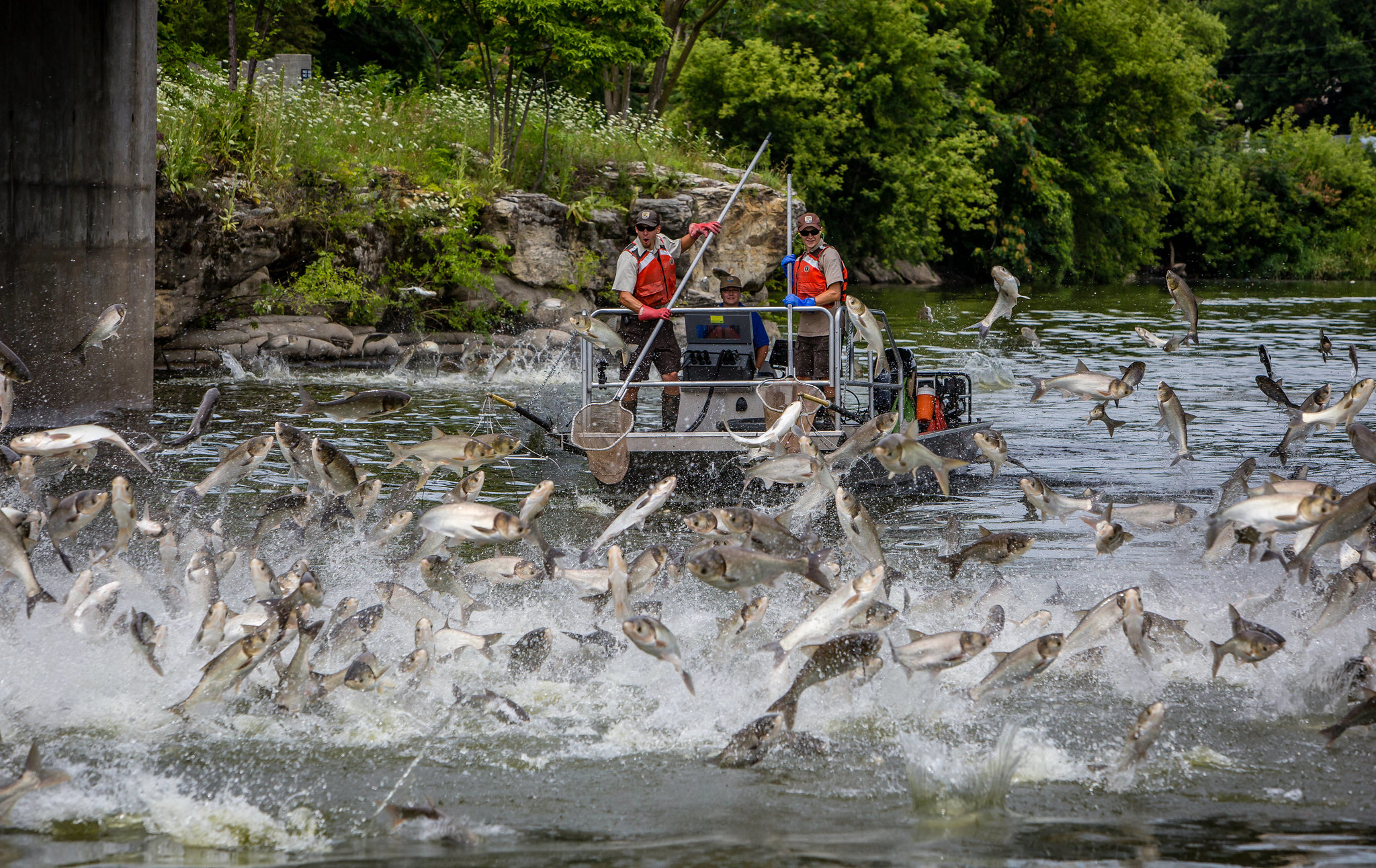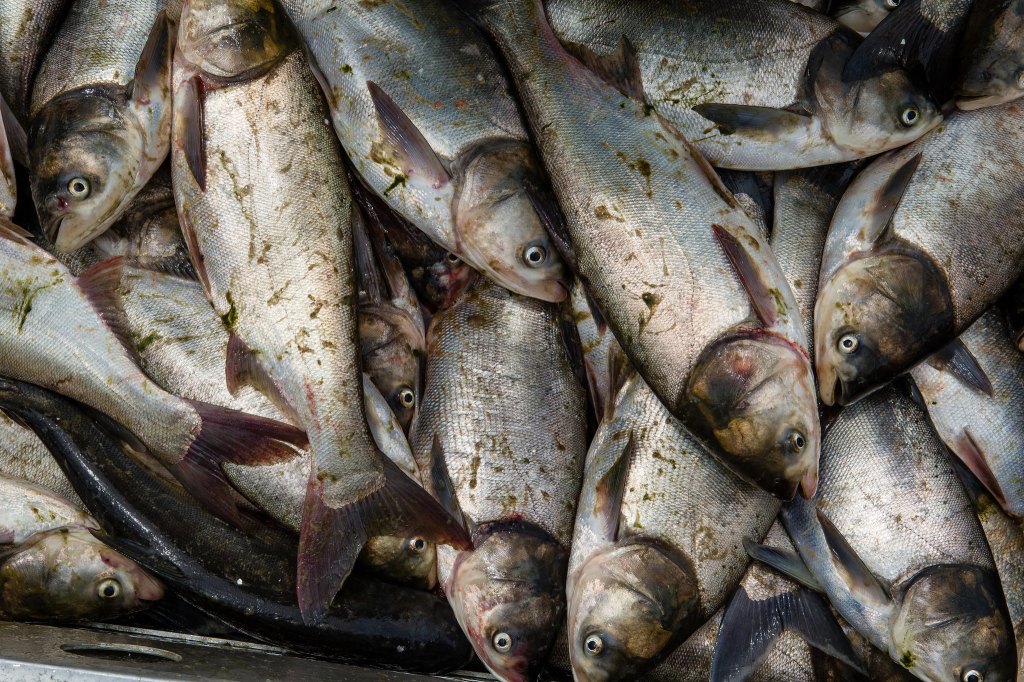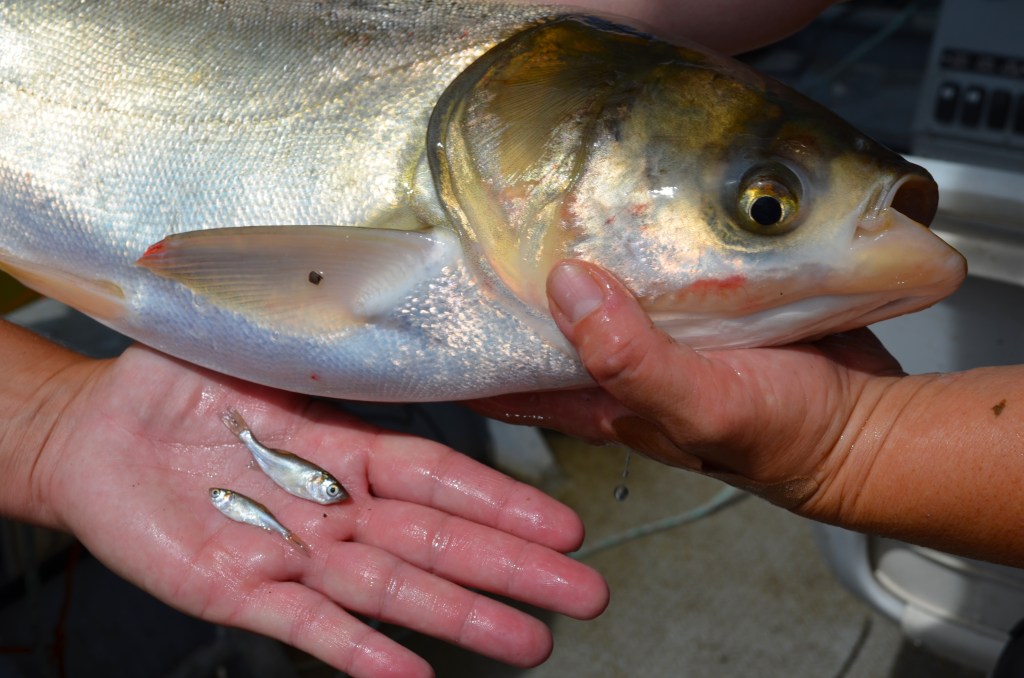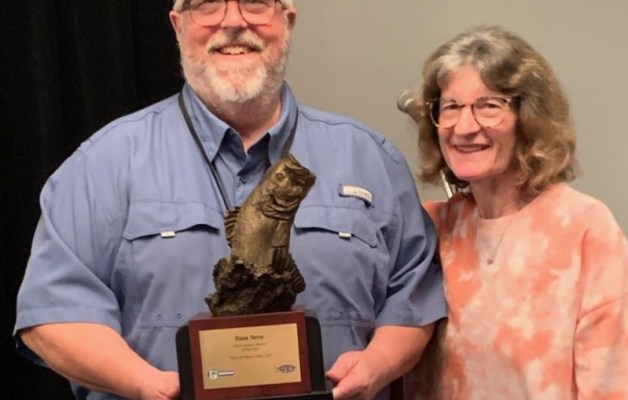
Embracing reality often forms the foundation from which to combat the unwanted. Diabetics understand that they’ll live with this serious medical affliction, but diligent management can minimize its impact and restrictions.
Similarly, a significant element of fisheries management includes addressing the challenges presented by invasive species. For the Upper Mississippi River pools hosting the Guaranteed Rate Bassmaster Elite, Asian carp top the list.
Comprising Bighead carp, silver carp, black carp, and grass carp, the Asian carp clan were introduced to the Southern U.S. from their Southeast Asia home waters in the 1960’s and 70’s. The main purpose was algae control in aquaculture ponds, but Asian carp also provide a food source.
Following flood-related escapes, Asian carp have become a serious threat to the ecology of the entire Mississippi River Basin and other major rivers, including the Missouri, Illinois and Tennessee. As B.A.S.S. Conservation Director Gene Gilliland explains, the very purpose for which Asian Carp were recruited (pond cleaning) has defined their environmental detriment.

“They’re filter feeders, so they directly compete for the algae and plankton, which is, essentially, the base of the food chain for everything else,” Gilliland said. “Considering their tremendously high reproductive capacity, they can potentially out-compete not just the native forage fish, but also the juvenile game fish. When bass or crappie or other game fish are little, they all eat the same thing.
“I explain it this way: Your fish bowl can only hold so many pounds of fish. Mother Nature sets the carrying capacity for what a body of water will sustain. When you have so many additional pounds of invasive carp, something has to give. That’s where the impacts on game fish and forage fish are going to be felt.”
On the move
Asian carp feel the impacts of their own population densities, so they have aggressively expanded their territory. The Mississippi River’s navigational system of locks and dams have facilitated this expansion and everywhere Asian Carp reach, it does not take long for established reproducing populations to reach problematic levels.
Gilliland has seen the struggle that Wisconsin and other Mississippi River Basin states face. In his view, the Asian carp numbers have grown so vast that the problem likely defies permanent solution — at least by current methods.
“In my opinion, we will never eradicate invasive carp out of the Mississippi River Basin — there’s too many of them there already,” Gilliland said. “The best we can hope for is managing those populations and preventing them from spreading into uninfected areas.
“A lot of the work now has involved trying to figure out the best way to control the numbers. Even though they may be reproducing somewhere downstream, if you manage (Asian carp), the numbers that might try to migrate into new waters are going to be limited and the impacts would be less of a problem.”
Cooperative effort
Why does this matter? According to a 2015 U.S. Fish and Wildlife Service (USFWS) report, the estimated economic output from recreational fishing in the Mississippi River Basin surpasses $19 billion. That figure comes from a 2021 report titled “Monitoring and Response Plan for Invasive Carp in the Mississippi River Basin” from the Mississippi Interstate Cooperative Resource Association (MICRA).
Organized in 1991, MICRA unites 28 state natural resources management agencies with fisheries management jurisdiction in the Mississippi River Basin. The partnership’s goal is to improve management of inter-jurisdictional fish and other aquatic resources within the basin.
Federal agencies and federally chartered entities that manage and regulate Mississippi River Basin resources across states also participate in the MICRA partnership. The organization’s collective scope reflects the depth of Asian carp concern.
As the MICRA report explains, the Mississippi River and many of its larger tributaries are defined as “inter-jurisdictional rivers” meaning that they flow between, or are common to two or more state boundaries; or that they flow between two or more land management jurisdictions.
“Inter-jurisdictional fisheries” are those fishery resources that cross, or are common to two or more state boundaries and come under the shared jurisdiction of two or more governmental entities.
If we consider what’s at stake, the Mississippi River Basin is the nation’s largest watershed (fourth largest in the world). Covering 1.2 million square miles or approximately 41% of the continental U.S., the watershed drains all or part of 31 states and two Canadian provinces.
MICRA describes its mission as seeking to improve the conservation, management, development and utilization of inter-jurisdictional fishery resources (both recreational and commercial) in the Mississippi River Basin through improved coordination and communication among the responsible management entities.
Essentially, everyone has the same basic objective — to control the Asian Carp’s expansion, But the more these agencies and entities communicate and collaborate, the more effective the overall effort.
Relating to Elite tournament waters, the MICRA report states: “Partners continue adaptive development and implementation of a comprehensive and complementary early detection and response program for (Asian carp) in the Upper Mississippi River Basin. This early detection program helps define the current presence, invasion, and established fronts and evaluate how these fronts change through time, (providing) important knowledge for management decisions.”
Another key point from MICRA: “It is important to know where carp are established or reaching spawning thresholds to decide when and where to implement management strategies such as deterrents or removal efforts.”

Carp control
Control methods include purse seining, gill netting, electrofishing (shocking carp to the surface and gathering with dip nets), larval trawling (bow mounted icthyoplankton net pushed near the surface into the current in likely spawning areas, and the Modified Unified Method (driving carp into progressively smaller areas for collection.)
Gilliland regularly interacts with fisheries managers throughout the Mississippi River Basin, so he hears much of the ongoing conversations regarding Asian Carp control efforts. There’s no silver bullet and options carry bring varying success rates with equally diverse cost/labor considerations.
“There are, what I call a lot of ‘science fiction’ solutions that are being researched,” Gilliland said. “These include genetic manipulation, specific kinds of poison pills — things that could be put into the water that would kill the carp, but not the native species. A lot of this research is being done by the U.S. Geological Survey (USGS).
“The short-term answer is for us to catch as many of these things as we can by nets and trawls to physically reduce the numbers so there would be fewer of them running upstream to try to spawn. The commercial fishing aspect of this is, what I think, is showing the most promise, in terms of the management goal.”
The challenge, Gilliland said, is developing the commercial market for Asian carp to an economically enticing level. Money motivates and, in Gilliland’s view, going beyond state subsidies and addressing the processing, shipping and other logistical factors related to commercial fishing could unleash a fury of Asian carp elimination effort.
Comparing the commercial fishing option to other control methods burdened by those cost and labor concerns, Gilliland said. “There are a lot of commercial fishermen who would say ‘We can do a whole lot better with a whole lot less money if we had a place to sell them.
“I think there are still a lot of unanswered questions as to what’s going to be the ultimate solution to management, because eradication is probably never going to happen.”

Angler assistance
While Asian carp are, at some level, here to stay, Gilliland said the major concern for the Upper Mississippi River is preventing further expansion. Some of that may involve tough decisions regarding locks and dams, but there’s also a couple angler-level considerations.
“Certainly, that means educating anglers that might be using live bait because little invasive carp look a lot like shad and you don’t want people moving them into new waters,” Gilliland said.
For Asian carp identification, the Wisconsin Department of Natural Resources offers an informative brochure: https://dnr.wi.gov/files/PDF/pubs/WT/WT0999.pdf
In closing, Gilliland points out that, while it’s unlikely that an Asian carp larva could wind up in a boat’s livewell or bilge, due caution is always wise. An ounce of precaution is better than a pound of regret.
“We (B.A.S.S.) always promote the Clean, Drain and Dry mantra, for boats and trailers,” Gilliland said. “This protocol is something every boater out to practice, whether it’s to prevent the movement of invasive plants, algae, zooplankton, or fish. That’s just being a good, responsible boater anywhere you fish.”
For Clean, Drain and Dry directions, visit stopaquatichitchhikers.org/prevention/.
Photos by Invasive Carp Regional Coordinating Committee.





